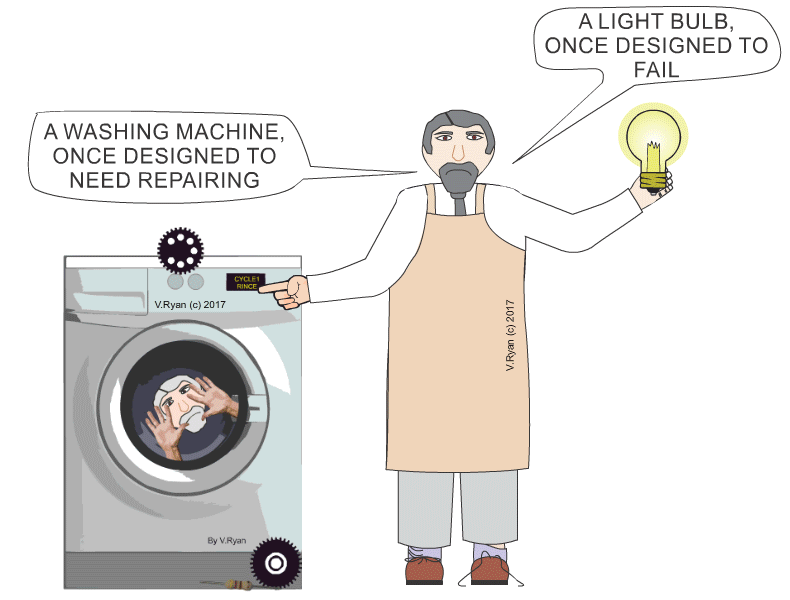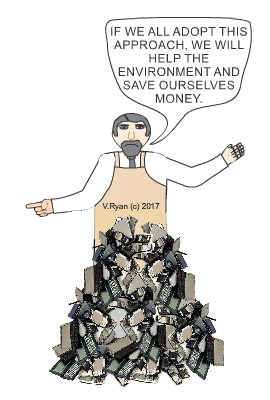THE PRODUCTS WE BUY
V.Ryan © 2017
Products are often designed to be thrown away when they fail. This is especially the case in respect to small electronics devices. However, there is a growing consumer compaign, to ensure that products are as environmentally friendly as possible. One way that this can be achieved, is through designing products that can be repaired and maintained. One such product is a kettle.
The ability to repair and regularly maintain a product, ensures that it is safe to use and that it is running efficiently. For example, a kettle with a faulty element (the part that heats the water) is not only a safety issue, but also it may be using too much energy. Imagine that a new heating element is invented, manufactured from a material that heats water to boiling point, using a fraction of the electricity of old kettles. Instead of throwing out the kettle and buying a new one, the element could be changed to the new ultra efficient one. This means that the kettle does not need replacing, only the element, helping to conserve materials and also helping the environment.
There was once a time when designers developed products, so that they would eventually fail. This was an attempt to get the customer to buy a replacement product, from the company that provided them with the original. Light bulbs were once manufactured to fail after a certain number of hours. It is believed that washing machines were once designed to fail, forcing the owner to buy spare parts (at a high price) or to buy a completely new machine. For more on built in obsolescence go to What is Planned Obsolescence?
Some products are designed, so that special tools were required to allow any attempt at repair.

Can be updated, to be more efficient, lengthening their useful life time.
It is cheaper to repair than replace an entire product.
Repairable products are environmentally friendly, as they save/conserve materials and help limit damage to the environment.
Some products need annual checks / servicing, to ensure they continue to work, are safe and efficient (e.g. a car).
Products that can be repaired / maintained are beginning to be popular with consumers.
As products become more repairable and can be upgraded, it is less likely that we will be influenced by ‘perceived obsolescence’ and less likely to be influenced by advertising.
As more and more potential customers purchase repairable/upgradeable products, designers and manufacturers will be forced to provide products of this type. The notion of repair and upgrade will become a design philosophy.
Repairable and maintainable products, is a cheaper option for the customer.

2. Make a list of products that are probably cheaper to replace, than repair.
3. Make a list of products that are often repaired, rather than replaced.